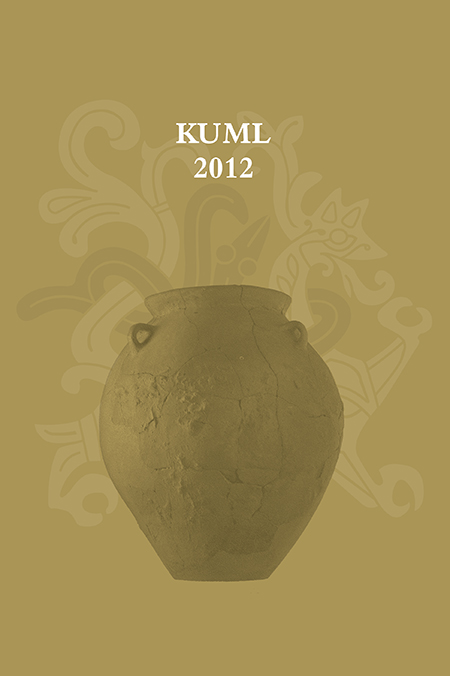En keramiktraditions begyndelse – Senmiddelalderens keramikproduktion og sociale forandringer
DOI:
https://doi.org/10.7146/kuml.v61i61.24503Keywords:
keramik, tradition, senmiddelalder, sociale forandringerAbstract
A new ceramic tradition
Social changes reflected in medieval pottery production
Jutland’s locally manufactured grey to black earthenware pots – so-called Jydepotter – constituted widespread consumer goods during the main period of their production from around 1400 to 1900. Within this ceramic tradition, the typical vessel shapes and mode of production remained practically unchanged over a period of 500 years (figs. 1-2). However, it is unclear how the tradition started and, in particular, how this apparently local manufacture could take over from the existing more professional production of hard-fired and often wheel-thrown vessels.
The shift in production mode for grey wares has previously been explained in terms of a continuation of the local pit-fired pottery production of the Early Middle Ages. The demonstration, within the last ten years, of the presence of this ware type has underlined the existence of local production on a restricted scale (fig. 5). Together with a large variation in fashioning techniques in hard-fired pottery production (fig. 4), a degree of diversity in the ceramic production of the High Middle Ages seems likely. Consequently, the transition to an early, probably locally-rooted Jydepotte-tradition appears less striking.
Rather than being a continuation of a medieval tradition of local pit-fired pottery, the Jydepotte-tradition has repeatedly been described as following on from prehistoric, predominantly Iron Age, pottery production. This comparison indirectly reflects a prevalent conception of the technical aspects of ceramic production as being governed by ecological and functional constraints, leaving little room for cultural or social choices. But the ethnologically well-studied Jydepotte-tradition provides an example where considerable elements of the production process have little significance for either the properties of the vessels or their mode of production. It is thereby an expression of cultural style rather than functional adaptation (fig. 3).
In this article, the emergence of the Jydepotte-tradition is viewed in the light of the social and economic changes that took place around 1400. Extensive developments in technical craft traditions and ceramic production modes in Norway and England have been linked with the consequences of the Black Death and subsequent plagues. Changes in the production of both grey wares and of glazed red wares around 1400 in Denmark could have been similarly influenced by these circumstances. It seems likely that the vessels already constituted commercial items in the 16th century and this mode of production could have already existed from the beginning of the tradition. Accordingly, the early Jydepotte-tradition can be seen as a local attempt to meet the demand for cheap household vessels, constituting a competitive alternative to a declining professional production as a consequence of the Black Death and the social and economic changes that occurred around 1400.
Lone Claudi-Hansen
Sydvestsjællands Museum
Downloads
Published
How to Cite
Issue
Section
License
Fra og med årgang 2022 er artikler udgivet i Kuml med en licens fra Creative Commons (CC BY-NC-SA 4.0).
Alle tidligere årgange af tidsskriftet er ikke udgivet med en licens fra Creative Commons.


